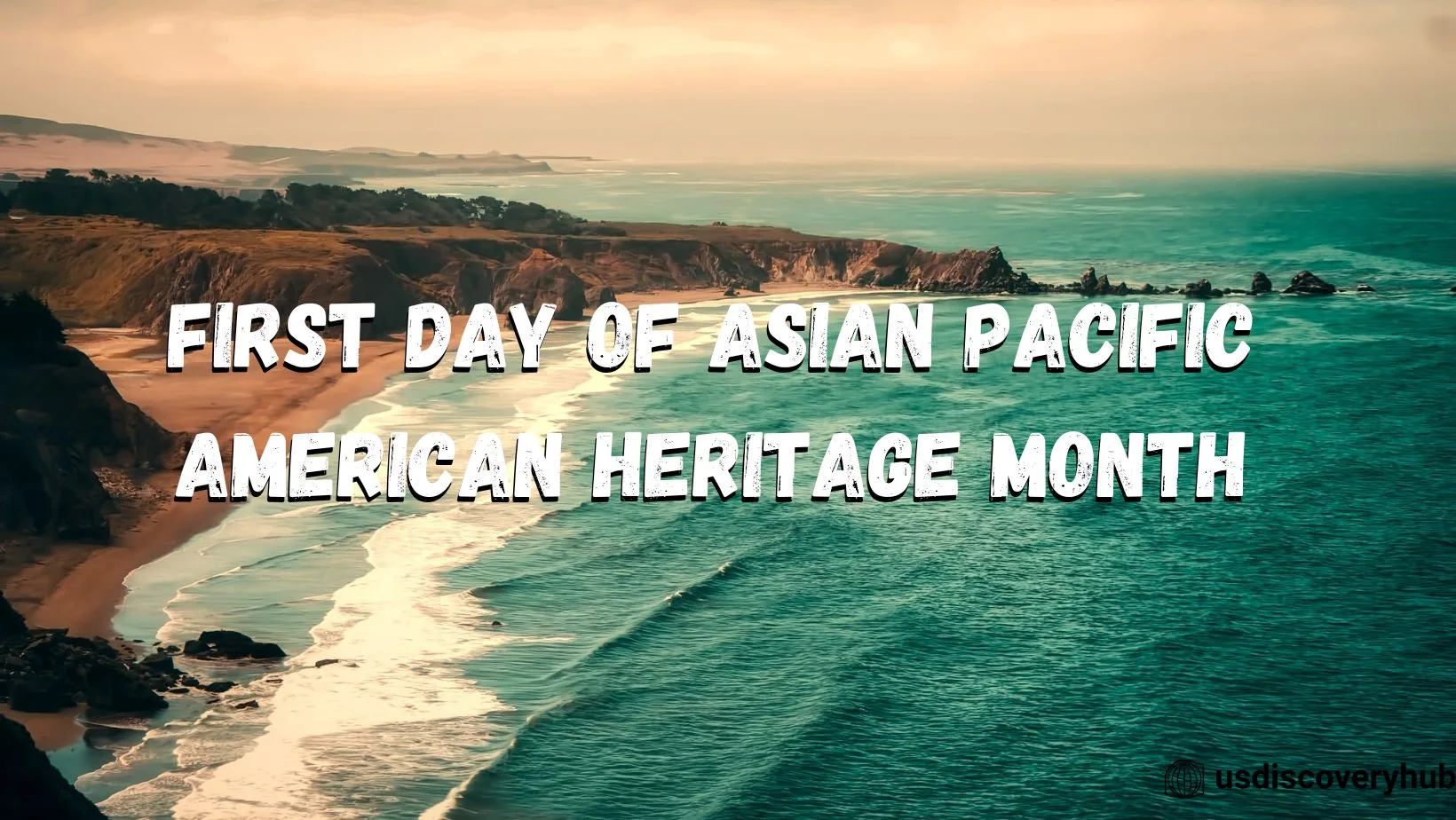Asian Pacific American Heritage Month is a celebration of the diverse and rich cultures, traditions, and contributions of Asian and Pacific Islander Americans to the United States. It is celebrated every year in May to commemorate the arrival of the first Japanese immigrants to the United States on May 7, 1843, and the completion of the transcontinental railroad, largely built by Chinese immigrants, on May 10, 1869.
This month-long celebration provides an opportunity for Americans to learn about the history and experiences of Asian and Pacific Islander Americans, and to recognize their contributions to American society in various fields, including art, science, literature, politics, sports, and more.
History of Asian Pacific American Heritage Month
The history of Asian Pacific American Heritage Month dates back to the late 1970s, when a group of Asian Pacific American activists in California sought to recognize the contributions of Asian and Pacific Islander Americans to American society.
In 1977, the activists organized the first Asian Pacific American Heritage Week, which was held during the first week of May to coincide with the anniversary of the arrival of the first known Japanese immigrant to the United States, on May 7, 1843.
The week-long celebration included cultural events, educational programs, and community gatherings that highlighted the history, traditions, and contributions of Asian and Pacific Islander Americans.
Over the next decade, the celebration spread to other parts of the country, as more and more people became aware of the contributions of Asian and Pacific Islander Americans to American society. In 1990, Congress passed a resolution to make May Asian Pacific American Heritage Month, and President George H.W. Bush signed the bill into law the following year.
Since then, Asian Pacific American Heritage Month has been celebrated annually in May, with various events, programs, and activities organized by community organizations, schools, universities, and government agencies across the country.
The celebration has expanded to include not only Asian and Pacific Islander Americans, but also people of Middle Eastern and South Asian descent, who are now recognized as part of the larger Asian American and Pacific Islander (AAPI) community.
Today, Asian Pacific American Heritage Month is an important celebration that recognizes the contributions and experiences of AAPI people to American society, and helps to raise awareness about their history, cultures, and traditions. It is a time to celebrate the rich diversity of American society, and to promote greater understanding, respect, and unity among all Americans.
Celebrating Asian Pacific American Heritage Month
Asian Pacific American Heritage Month is celebrated in various ways throughout the United States, and there are many events and activities that take place during the month of May to recognize the contributions and experiences of Asian and Pacific Islander Americans. Here are some of the ways that the month is celebrated:
- Festivals and Fairs: Many cities and communities organize cultural festivals and fairs that feature the music, dance, food, and art of Asian and Pacific Islander Americans. These events often include performances by traditional dance troupes, musical groups, and other artists, as well as food vendors offering traditional dishes from a variety of Asian and Pacific Islander cultures.
- Film Festivals: Film festivals featuring works by Asian and Pacific Islander American filmmakers are also popular during Asian Pacific American Heritage Month. These festivals provide a platform for filmmakers to showcase their work and to promote greater awareness of the experiences of Asian and Pacific Islander Americans.
- Exhibits and Art Shows: Museums and art galleries often feature exhibits and shows that highlight the contributions of Asian and Pacific Islander American artists and creators. These exhibits may include paintings, sculptures, photographs, and other works that reflect the unique perspectives and experiences of Asian and Pacific Islander Americans.
- Educational Programs: Many schools and universities organize educational programs and workshops to teach students about the history and experiences of Asian and Pacific Islander Americans. These programs may include lectures, panel discussions, and other events that provide students with an opportunity to learn about the diverse cultures and traditions of Asian and Pacific Islander Americans.
- Community Events: Community events, such as parades, lectures, and panel discussions, are also popular duringAsian Pacific American Heritage Month. These events provide an opportunity for community members to come together to celebrate the contributions and experiences of Asian and Pacific Islander Americans, and to promote greater understanding, respect, and unity among all Americans.
In addition to these events and activities, many organizations and institutions also use Asian Pacific American Heritage Month as an opportunity to highlight the achievements of Asian and Pacific Islander Americans in various fields, such as science, technology, politics, sports, and more. They may also use the month to raise awareness of the ongoing struggles and challenges faced by Asian and Pacific Islander Americans, such as discrimination, racism, and xenophobia.
Overall, Asian Pacific American Heritage Month is an important celebration that recognizes the contributions and experiences of Asian and Pacific Islander Americans to American society. Through a wide range of events and activities, it provides an opportunity for Americans to learn about the rich and diverse cultures, traditions, and values of Asian and Pacific Islander Americans, and to appreciate their unique perspectives and contributions to American society.
What countries are included in Asian Pacific American Heritage Month
Asian Pacific Heritage Month is celebrated annually in the United States during the month of May. The event honors the contributions of Asian and Pacific Islander Americans to American culture and society. The countries included in Asian Pacific Heritage Month are those from Asia and the Pacific Islands.
The term “Asian” refers to individuals or groups who have origins in any of the following countries: Afghanistan, Azerbaijan, Bahrain, Bangladesh, Bhutan, Brunei, Cambodia, China, Georgia, India, Indonesia, Iran, Iraq, Israel, Japan, Jordan, Kazakhstan, Kuwait, Kyrgyzstan, Laos, Lebanon, Malaysia, Maldives, Mongolia, Myanmar (Burma), Nepal, North Korea, Oman, Pakistan, Palestine, Philippines, Qatar, Russia, Saudi Arabia, Singapore, South Korea, Sri Lanka, Syria, Taiwan, Tajikistan, Thailand, Timor-Leste (East Timor), Turkey, Turkmenistan, United Arab Emirates (UAE), Uzbekistan, Vietnam, and Yemen.
Meanwhile, “Pacific Islander” refers to individuals or groups who have origins in any of the following countries or territories: American Samoa, Australia, Cook Islands, Federated States of Micronesia, Fiji, French Polynesia, Guam, Kiribati, Marshall Islands, Nauru, New Caledonia, New Zealand, Niue, Norfolk Island, Northern Mariana Islands, Palau, Papua New Guinea, Pitcairn Islands, Samoa, Solomon Islands, Tokelau, Tonga, Tuvalu, Vanuatu, and Wallis and Futuna.
As you can see, the countries included in Asian Pacific Heritage Month represent a wide range of cultures and ethnicities. Some of the largest Asian groups in the United States include Chinese, Indian, Filipino, Vietnamese, Korean, and Japanese. The Pacific Islander population in the United States is smaller, with the largest groups being Native Hawaiians and Samoans.
Asian Pacific Heritage Month has its roots in the 1970s, when a group of Asian activists in California sought to raise awareness about the contributions of Asian Americans to American society. In 1978, President Jimmy Carter signed a resolution declaring the first ten days of May to be Asian Pacific American Heritage Week. This was later expanded to a month-long celebration in 1992, when President George H.W. Bush signed a law designating May as Asian Pacific American Heritage Month.
Today, Asian Pacific Heritage Month is celebrated throughout the United States with events and activities highlighting the achievements and contributions of Asian and Pacific Islander Americans. These events include cultural festivals, art exhibits, film screenings, and panel discussions featuring prominent Asian and Pacific Islander Americans.
Asian Pacific Heritage Month is an opportunity to recognize the diversity and richness of the Asian and Pacific Islander American experience, and to celebrate the contributions of these communities to American culture and society. By recognizing and honoring these contributions, we can work towards a more inclusive and equitable society for all.
Why is May Asian Heritage Month
May is recognized as Asian Pacific American Heritage Month in the United States to commemorate the arrival of the first Japanese immigrants to the United States on May 7, 1843. This month-long celebration was officially designated in 1992 by President George H.W. Bush to recognize and honor the contributions and accomplishments of Americans of Asian and Pacific Islander descent throughout U.S. history.
Asian Americans and Pacific Islanders (AAPI) have a rich and diverse heritage, with roots in more than 50 countries in the Asia-Pacific region. The first Asians to come to the United States were primarily Chinese immigrants in the 1850s, followed by Japanese, Filipino, and other Asian immigrants. Many of these early immigrants faced discrimination, violence, and exclusionary laws, but their contributions to American society were significant.
Asian Pacific American Heritage Month provides an opportunity to celebrate and recognize the achievements and contributions of AAPI individuals and communities to the United States. This month allows us to acknowledge the important roles that AAPI individuals have played in shaping American history, culture, and society, from fighting for civil rights to advancing science and technology.
In addition to commemorating the past, Asian Pacific American Heritage Month is also an opportunity to celebrate the present and the future. It allows us to recognize the diversity and richness of AAPI cultures and traditions, and to appreciate the contributions of AAPI individuals and communities to American life today.
Overall, Asian Pacific American Heritage Month serves as an important reminder of the integral role that AAPI individuals and communities have played and continue to play in shaping the United States, and highlights the need for continued support and advocacy for these communities.
First day of Asian Pacific American Heritage Month images
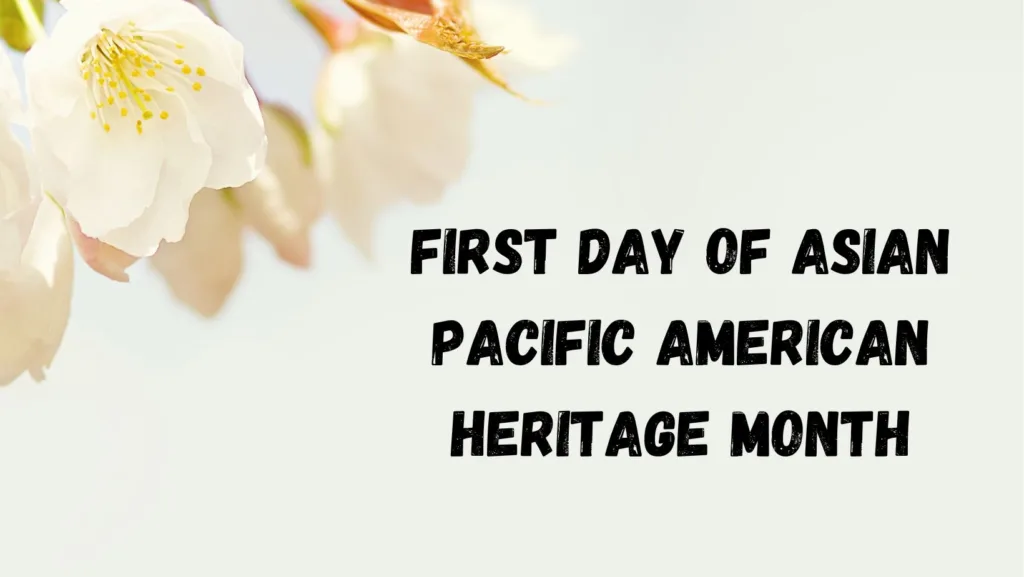
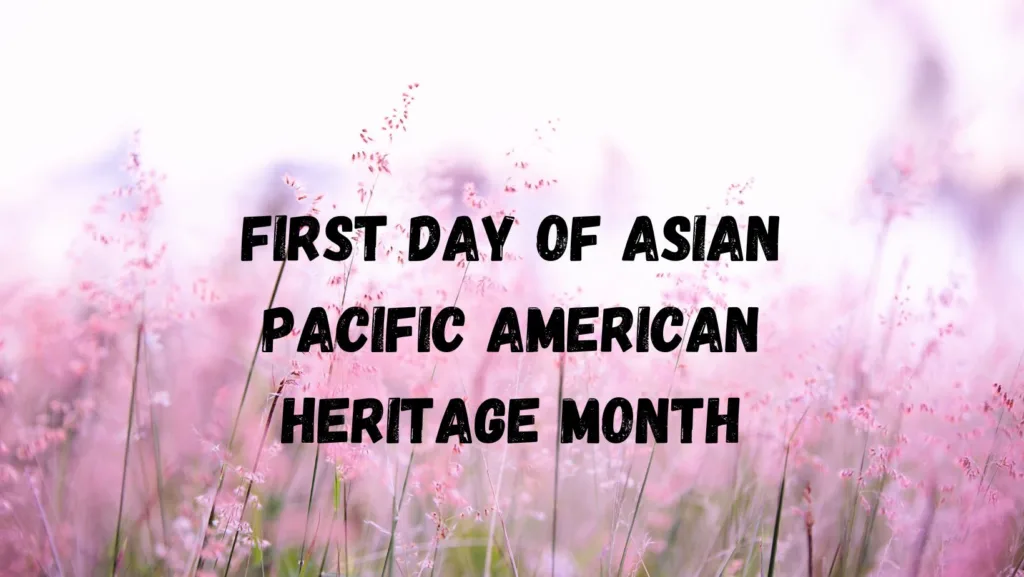
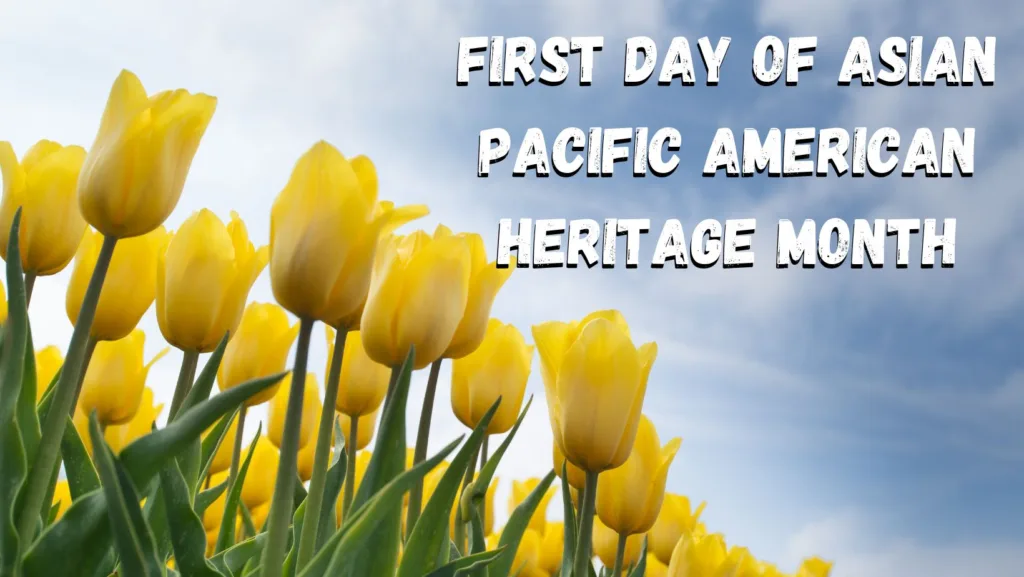
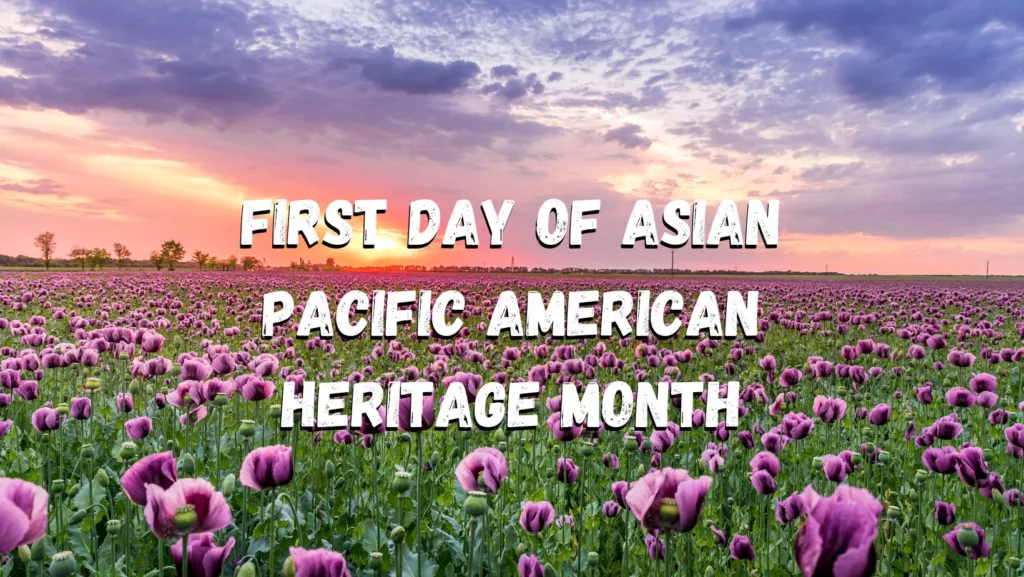
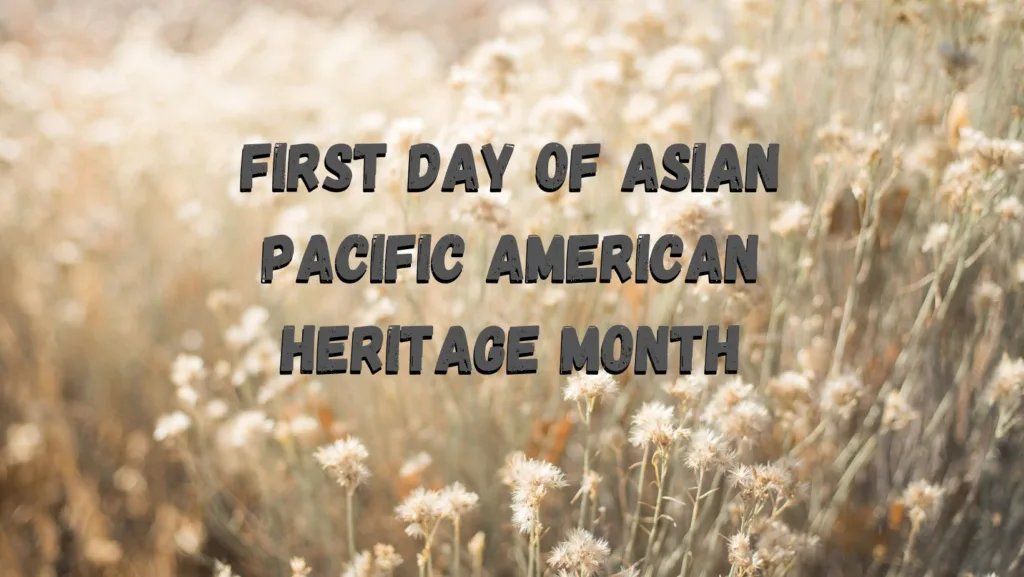
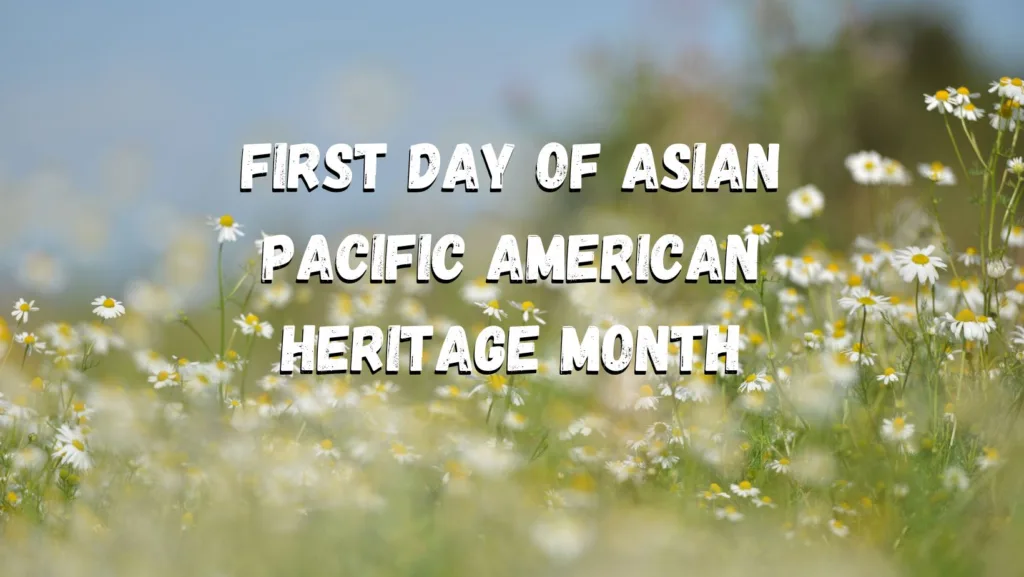
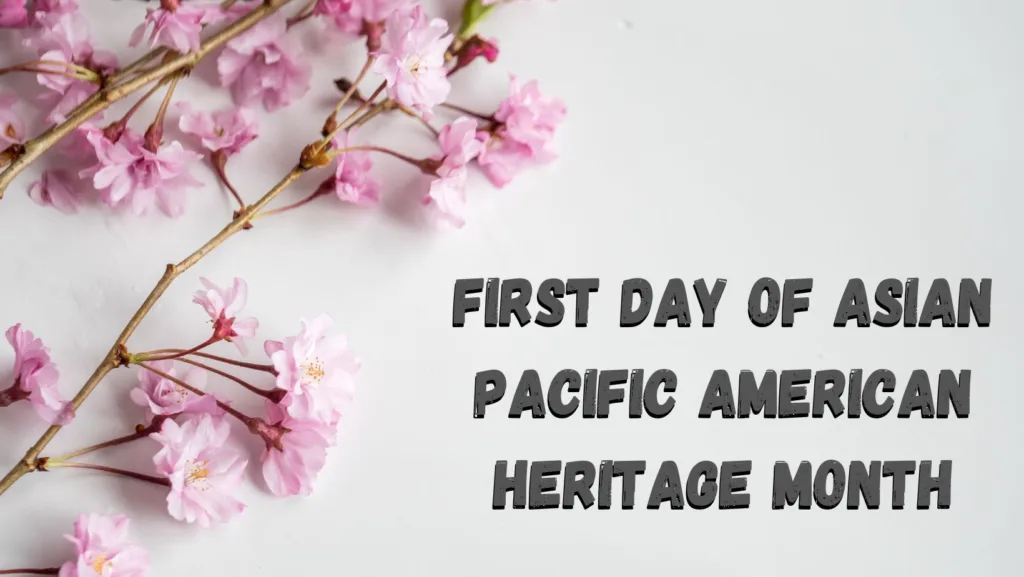
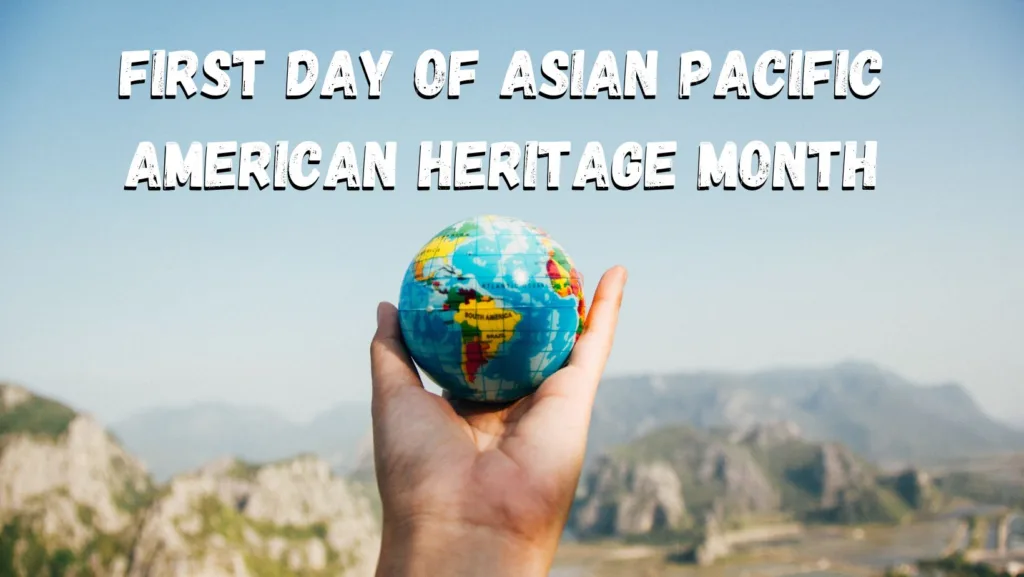
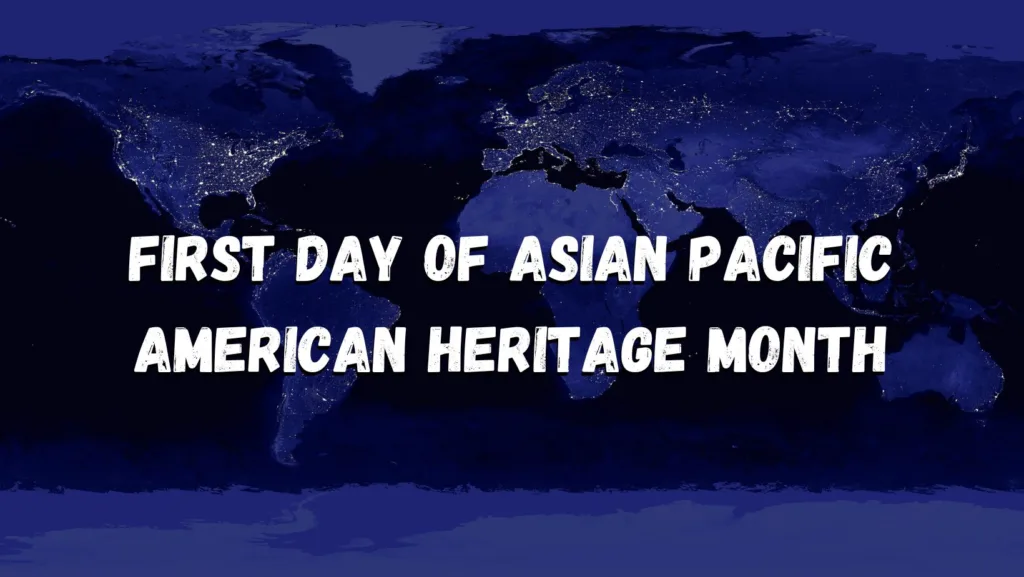
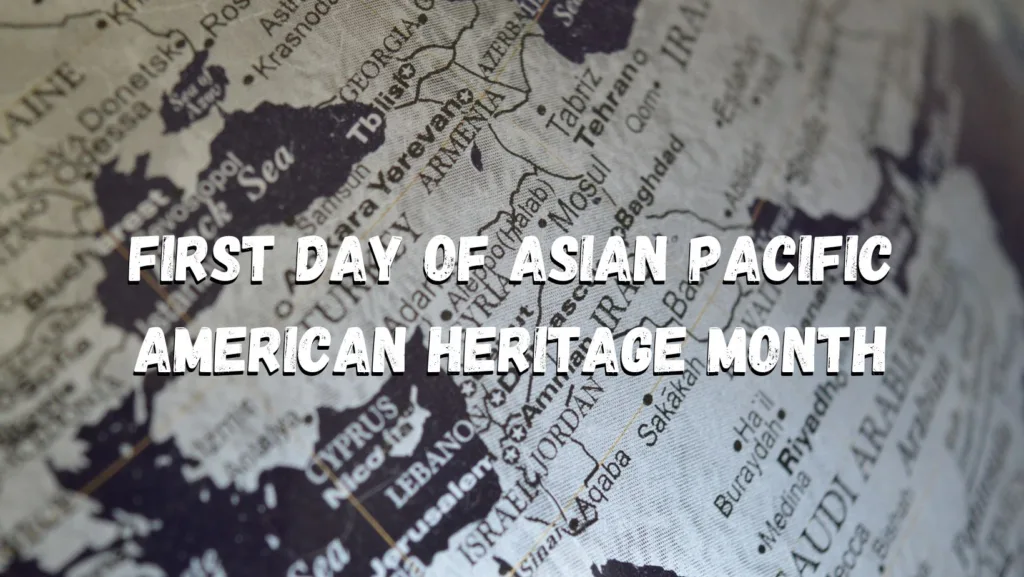
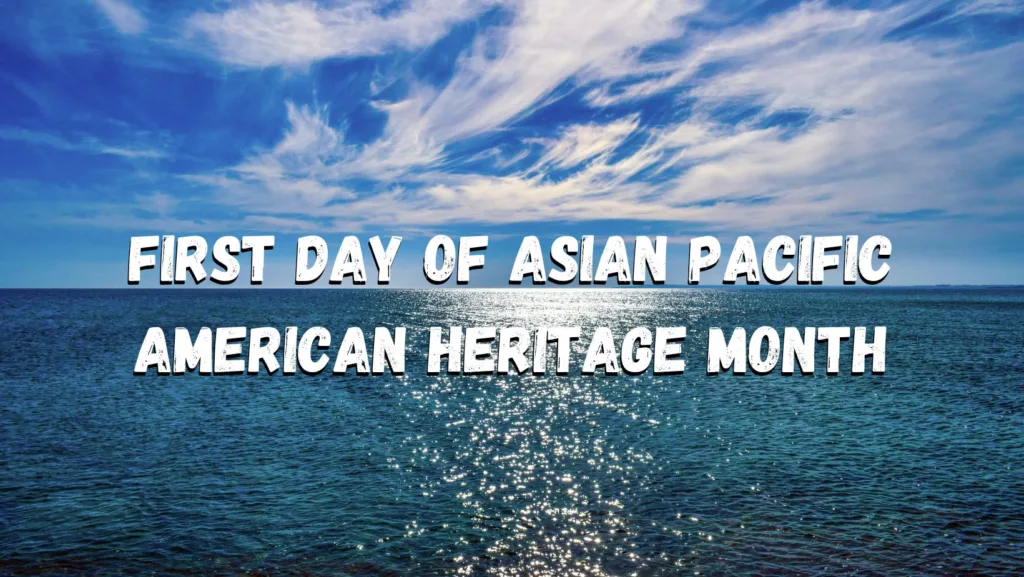
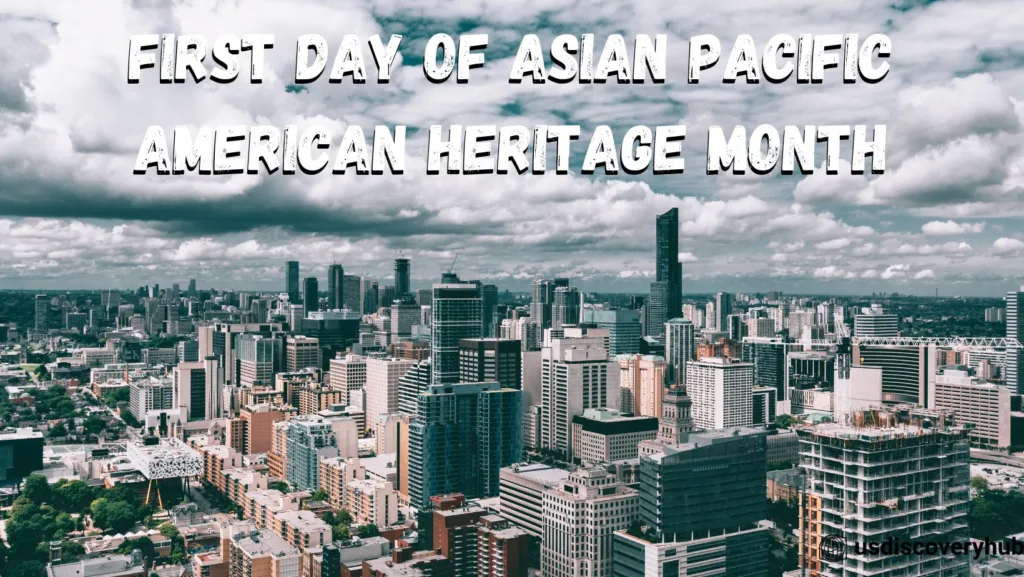
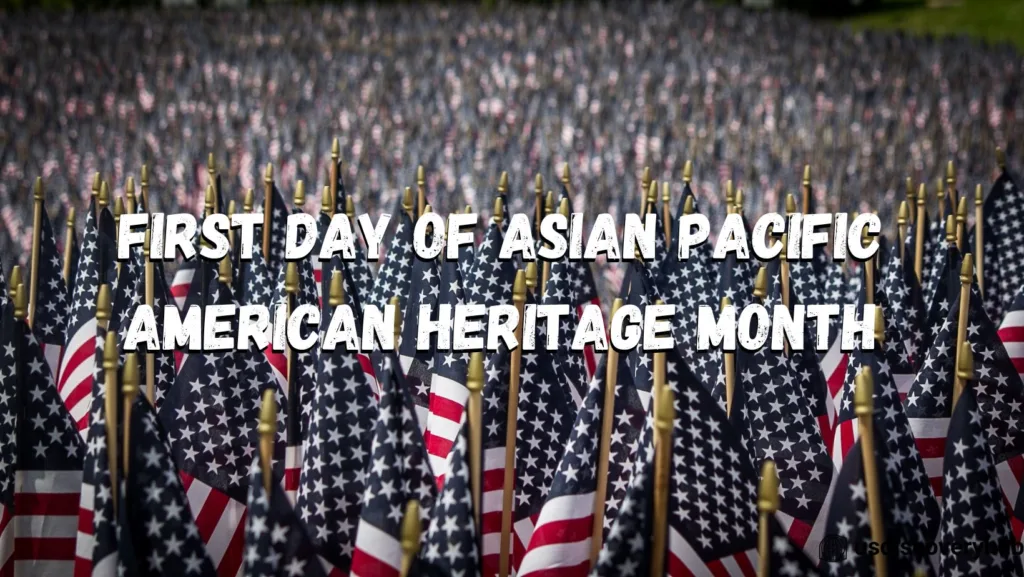
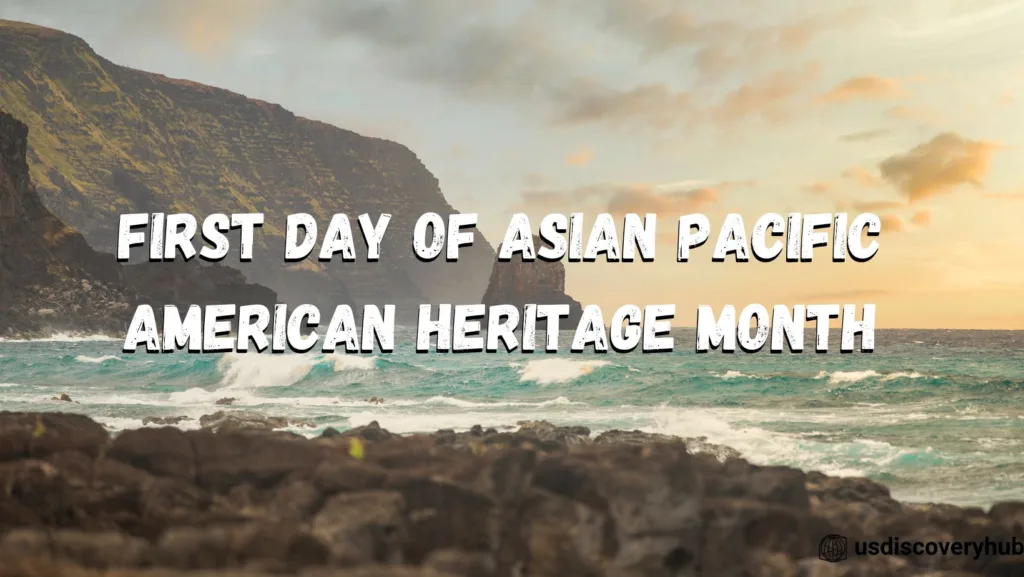
First day of Asian Pacific American Heritage Month related Facts
- Asian Pacific American Heritage Month is observed in the United States every May to celebrate the contributions and achievements of Asian Americans, Native Hawaiians, and Pacific Islanders.
- The month of May was chosen to commemorate the arrival of the first Japanese immigrants to the United States on May 7, 1843, and the completion of the transcontinental railroad, which was largely built by Chinese immigrants, on May 10, 1869.
- According to the U.S. Census Bureau, there were 22.6 million Asian Americans in the United States in 2020, representing 6.7% of the total population.
- The fastest-growing ethnic group in the United States is Asian Americans, with a growth rate of 29% between 2010 and 2020.
- Asian Americans come from diverse backgrounds, with more than 20 different ethnic groups, including Chinese, Japanese, Korean, Filipino, Indian, Vietnamese, Cambodian, and Hmong.
- Asian Americans have made significant contributions to American society in many fields, including science, technology, business, politics, sports, and the arts.
- Notable Asian American figures include astronaut Ellison Onizuka, civil rights leader Yuri Kochiyama, filmmaker Ang Lee, actor Bruce Lee, and writer Amy Tan.
- Asian Americans have also faced significant challenges and discrimination throughout history, including the Chinese Exclusion Act of 1882, the internment of Japanese Americans during World War II, and hate crimes and discrimination against Asian Americans during the COVID-19 pandemic.
- Many Asian American communities celebrate Asian Pacific American Heritage Month with cultural festivals, food events, and performances showcasing their heritage and traditions.
- Asian Pacific American Heritage Month provides an opportunity for Americans to learn about and celebrate the diverse histories, cultures, and contributions of Asian Americans, Native Hawaiians, and Pacific Islanders
First day of Asian Pacific American Heritage Month related FAQs
What is Asian Pacific American Heritage Month?
Asian Pacific American Heritage Month is a celebration of the contributions and achievements of Asian Americans and Pacific Islanders in the United States.
When is Asian Pacific American Heritage Month celebrated?
Asian Pacific American Heritage Month is celebrated in the month of May each year.
Who celebrates Asian Pacific American Heritage Month?
Asian Pacific American Heritage Month is celebrated by people of Asian and Pacific Islander descent, as well as others who are interested in learning more about their culture and history.
Why was May chosen for Asian Pacific American Heritage Month?
May was chosen for Asian Pacific American Heritage Month because it commemorates two important events in Asian American history: the arrival of the first Japanese immigrants to the United States on May 7, 1843, and the completion of the transcontinental railroad on May 10, 1869, which was built largely by Chinese immigrants.
What are some of the contributions that Asian Americans and Pacific Islanders have made to the United States?
Asian Americans and Pacific Islanders have made significant contributions to the United States in many areas, including science, technology, medicine, education, politics, the arts, and more.
Who are some famous Asian Americans and Pacific Islanders?
Famous Asian Americans and Pacific Islanders include individuals such as Bruce Lee, Yo-Yo Ma, Connie Chung, Maya Lin, Kristi Yamaguchi, Jeremy Lin, and many more.
What are some common cultural practices and traditions of Asian Americans and Pacific Islanders?
Asian Americans and Pacific Islanders come from diverse cultural backgrounds and have many different traditions and practices, such as food, music, dance, clothing, religion, and more.
What are some challenges that Asian Americans and Pacific Islanders have faced in the United States?
Asian Americans and Pacific Islanders have faced many challenges in the United States, including discrimination, racism, and exclusion from certain opportunities and institutions.
What can individuals do to celebrate and support Asian Pacific American Heritage Month?
Individuals can celebrate and support Asian Pacific American Heritage Month by learning about the history and culture of Asian Americans and Pacific Islanders, attending cultural events and celebrations, supporting Asian-owned businesses, and speaking out against discrimination and racism.
How can we continue to honor and recognize the contributions of Asian Americans and Pacific Islanders beyond the month of May?
We can continue to honor and recognize the contributions of Asian Americans and Pacific Islanders beyond the month of May by promoting diversity and inclusion, supporting Asian-owned businesses, advocating for policies that promote equity and equality, and standing up against discrimination and racism.
